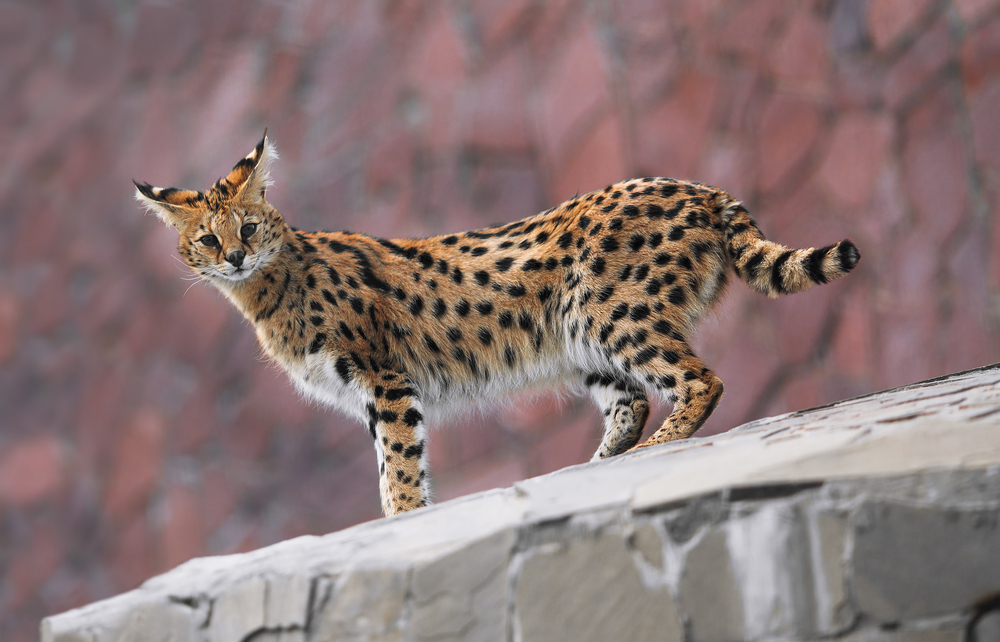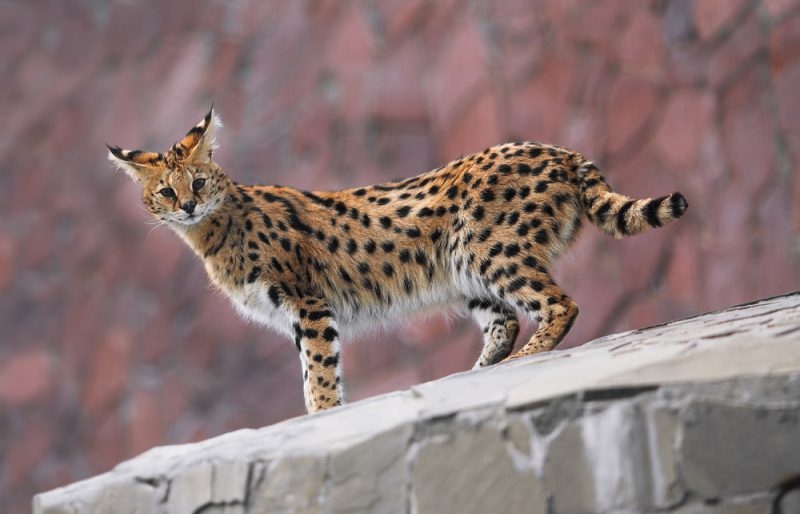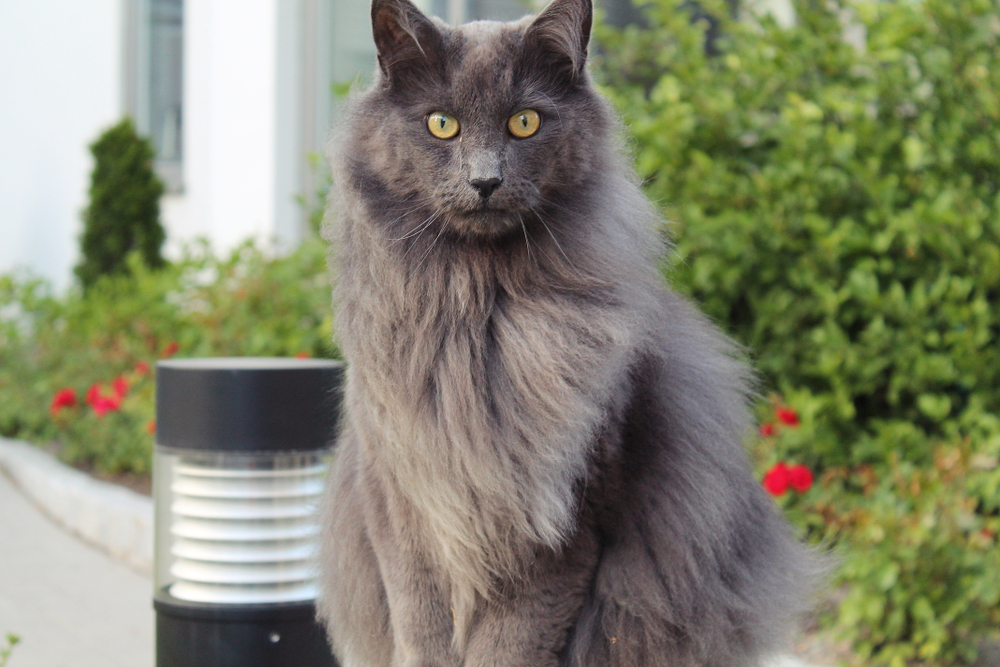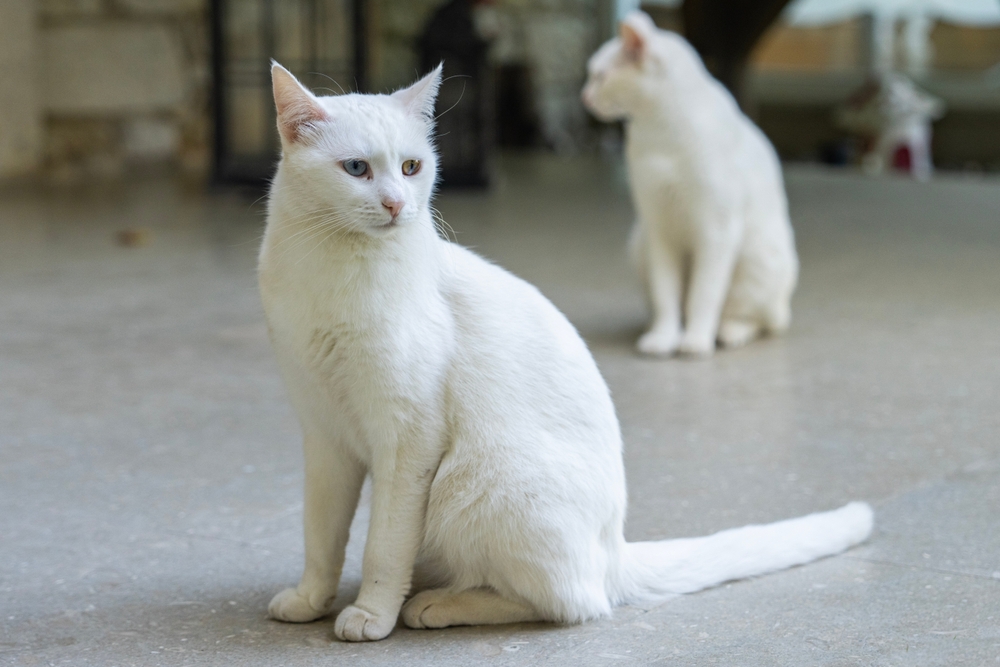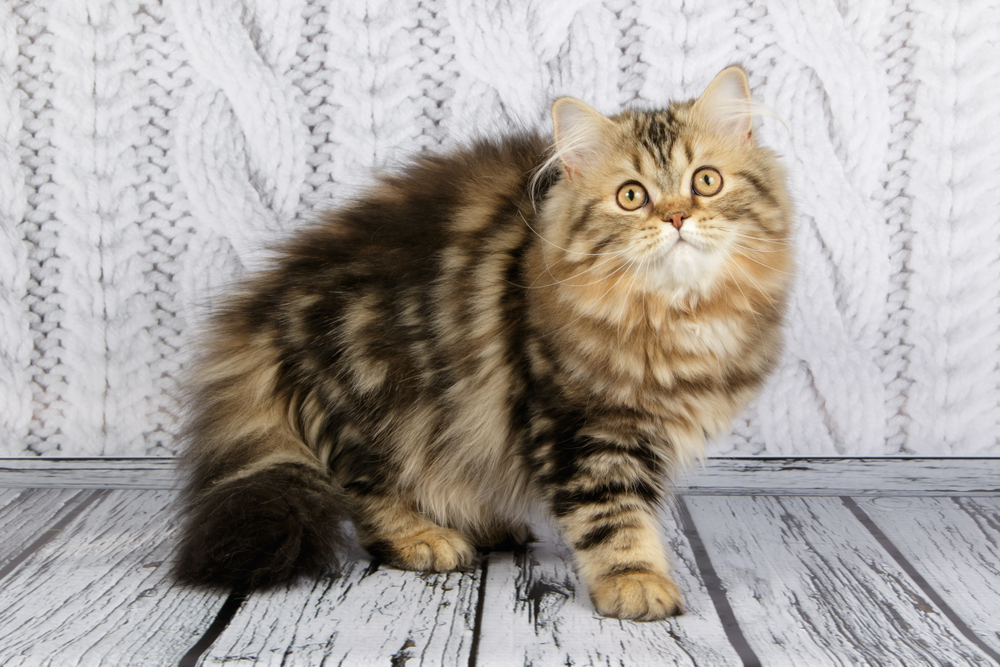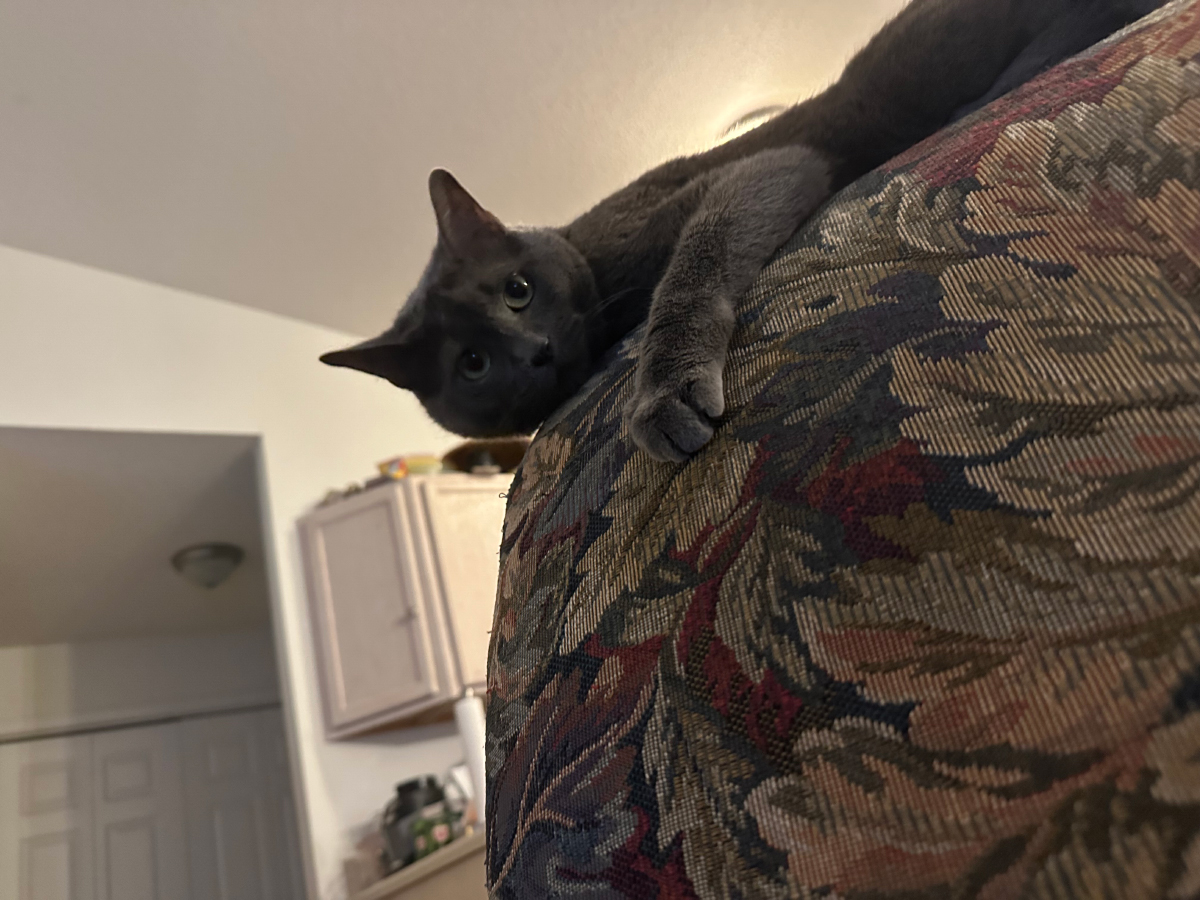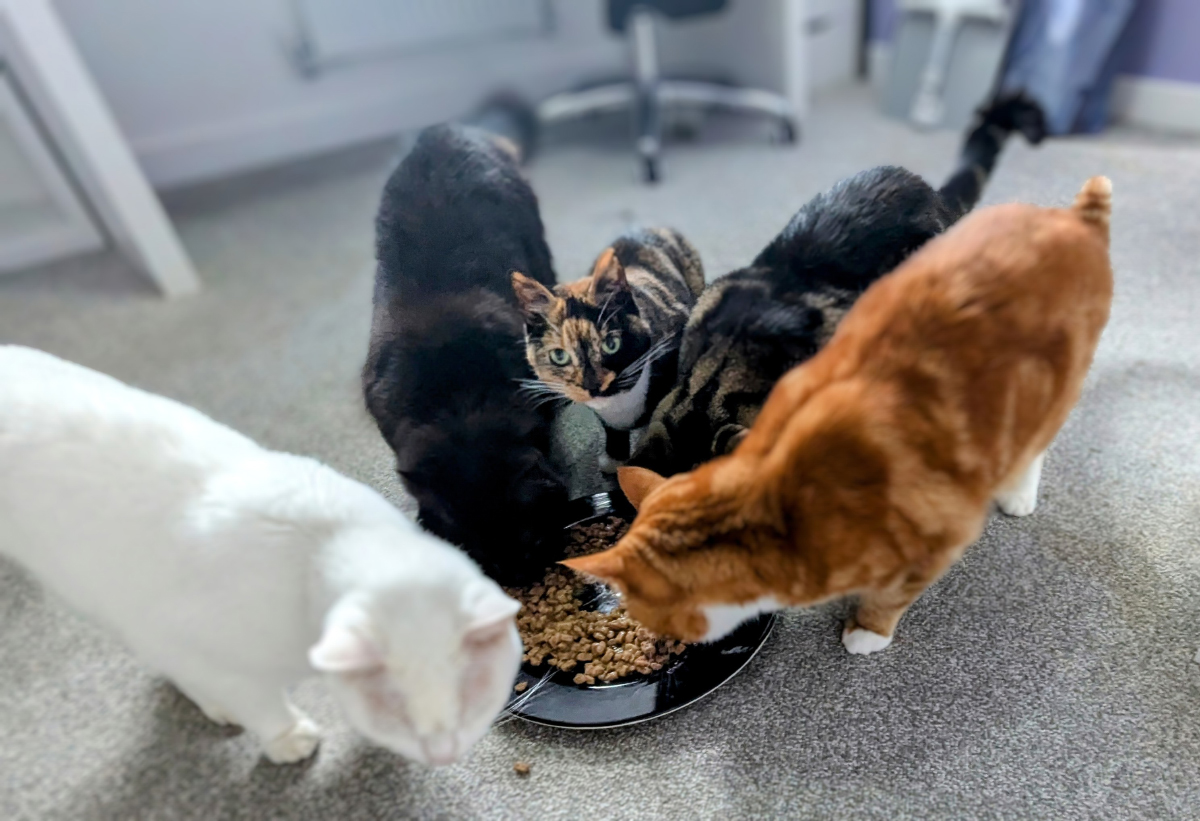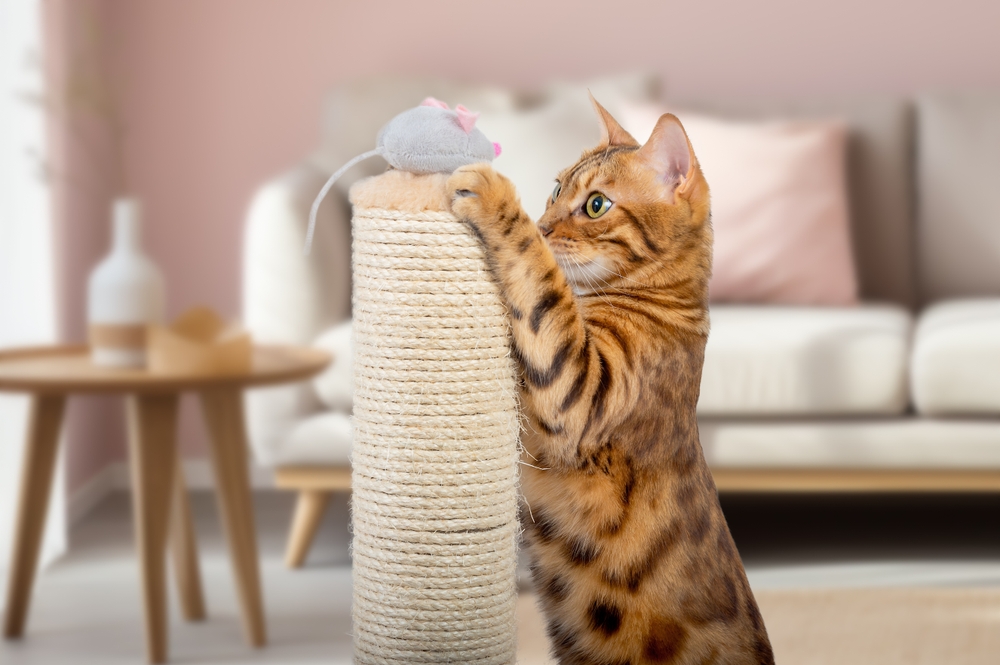Click to Skip Ahead
If you’ve considered adopting a more exotic cat, you might have looked at getting a Savannah cat. This stunning feline has adorable ears, long legs, and a spotted coat that makes them look fierce. Those fierce looks come from this hybrid breed’s parent, the wild African serval (the other parent breed is chosen from domestic feline stock). These kitties get rather large, and they can retain some or much of the wildness of their ancestors.
Their size and temperament will be partly determined by which generation the Savannah cat is. Hybrid cat breeds have “generations” that indicate how closely related to their wild ancestors they are. In the case of the Savannah cat, these generations are labeled as “F1,” “F2,” and so forth; the “F” stands for filial generation. The numbers in these designations represent the number of generations removed from the serval a cat is. So, while an F1 Savannah cat would be half serval and half domestic feline, an F2 Savannah cat is about 25% serval, as they are bred from an F1 Savannah cat (meaning the F2 Savannah cat has a serval grandparent but not a serval parent).
How does this affect the breed’s personality and appearance, though, and what should you know about the F2 Savannah cat before adopting one?
The Earliest Records of the Savannah Cat in History
Savannah cats first came about in the late 1980s when Bengal cat breeder Judee Frank crossbred her Siamese with a male serval, so the breed has been around for a while. The first kitten of this batch was named Savannah, and thus, the name of this new breed was born! While a Siamese was involved in creating the very first Savannah cats, nearly any domestic breed can create a Savannah.
F1 Savannah cats are the generation directly descended from the serval, while F2 Savannah cats are bred from an F1 Savannah cat and domestic cat. The generations continue after that, with each one getting further away from the wild instincts and appearance of the serval.
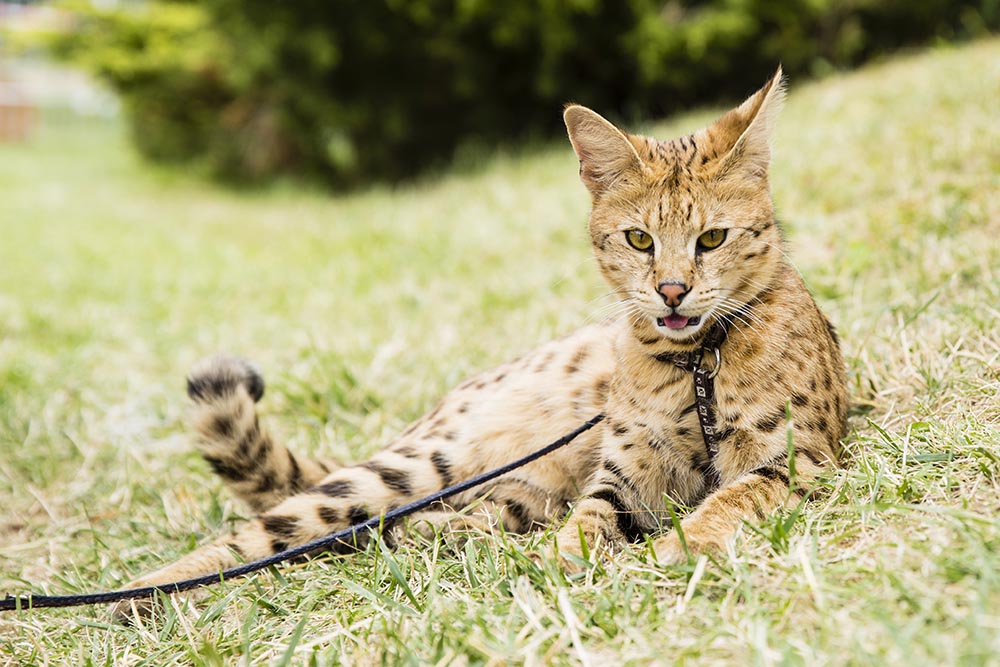
How Savannah Cats Gained Popularity
How did Savannah cats gain popularity? Was it simply that we all secretly desire to own a wild cat of our own? That is part of why this breed has become as popular as they are today!
Savannah cats are large and look like wild cats, and yes, many people want a feline that resembles a big cat of the wild, which is why F1 Savannah cats tend to be the most popular of all. (While F2 Savannah cats closely resemble F1s, they may be smaller and somewhat less wild.)
Social media likely played a vital role in spreading the word about this breed. One Savannah cat has an Instagram with 800,000 followers! Some celebrities now own this breed, so any pictures they post tend to go viral.
The public isn’t the only ones who fell in love with the size and looks of the Savannah cat, though. These felines quickly became popular with breeders, and many of these breeders started specializing in Savannah cats in the 1990s.
Formal Recognition of the Savannah Cat
As of now, The International Cat Association (TICA) recognizes the Savannah cat as a championship breed, though that wasn’t always the case. The Savannah cat was formally recognized in 2001 by TICA, but they weren’t recognized as a championship breed until 2012. What’s the difference? With a championship breed designation, the Savannah cat can participate in cat shows.
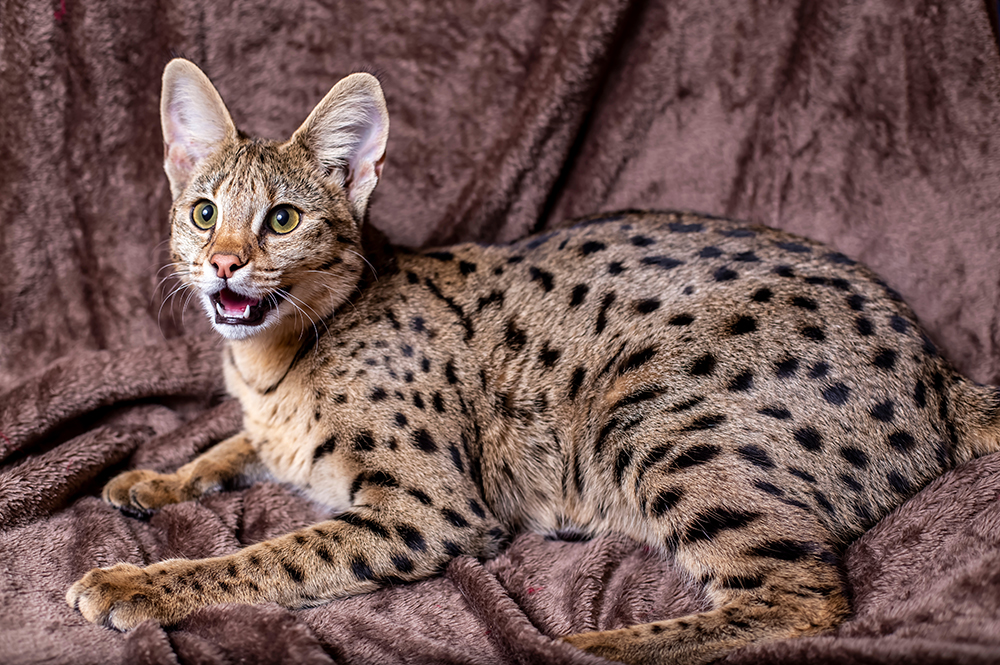
Top 3 Unique Facts About F2 Savannah Cats
What else is important to know about the Savannah breed before adopting one of these kitties?
1. You should think carefully before adopting one of these cats.
The sad truth is that Savannah cats are too often surrendered for adoption because too many owners find the breed too much to handle and are unable to meet their needs. When we say these cats still retain many of their parent or grandparent’s wild instincts, it’s no lie, and bringing a somewhat wild cat inside your home doesn’t always work out. So, think long and hard about whether the Savannah cat is right for you before adopting one!
2. Savannah cats are illegal in some areas.
Before adopting a Savannah cat, you should also make sure you’re allowed to own one. This breed is banned in several states and cities (and even in entire countries!), with each state or city having different rules about what’s allowed. Some areas ban all Savannah cats, while others only ban F1 to F3s. Plus, if you’re a renter, your landlord may have something to say about you bringing a Savannah cat into your home. So, be aware of that!
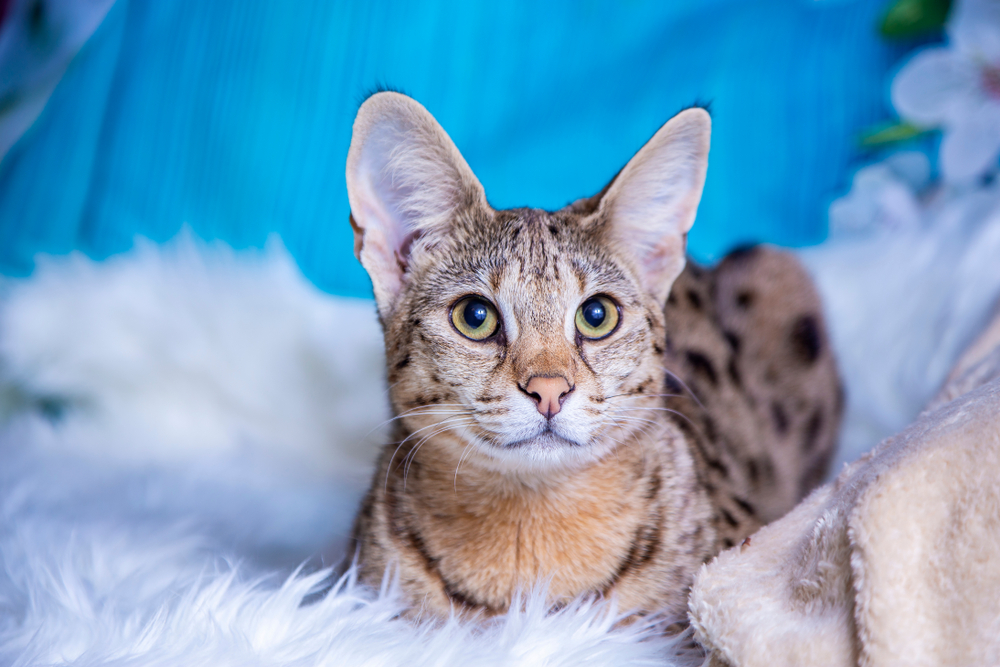
3. The traits a Savannah cat ends up with are not predictable
It’s difficult to say what your F2 Savannah cat will end up looking or acting like because it all comes down to genetics, and due to the mix of serval, domestic, and Savannah cat lines in the mix, those genetics are incredibly random. So, you might end up with a cat who looks wild but acts just like a domestic feline (or vice versa). You might end up with a cat who looks wild and acts wild. Early experiences and socialization at the breeder will also play a part in temperament and behavior later in life.
Does the F2 Savannah Cat Make a Good Pet?
For most homes, F1 and F2 Savannah cats are not considered good pets. These earlier crosses tend to be larger and retain more of the wild characteristics compared with generations F3 and above. Although they are intelligent and can be affectionate they can easily become unhandleable and aggressive in the wrong home.
An F2 Savannah from a reputable breeder, with good early socialization, can make a good pet for an experienced and knowledgeable owner with plenty of time and space to meet their needs. These felines are active, they get into everything, are constantly curious, and love to have fun. They require a lot of time and attention, plenty of space, opportunities to climb and jump, and chasing and hunting games to satisfy their high prey drive.
This prey drive means that they are likely to chase smaller mammals and if their needs are not met they have a tendency to be destructive. They tend to be highly territorial which can lead to conflicts with other cats and marking in the house.
Their size and potential for aggressive tendencies also means these felines may not be best around children. While definitely not lap cats, Savannah cats tend to bond closely with a single household member and follow them around non-stop.
So overall, although for the right person these striking cats can be a good pet, they require much more time, space and exercise than your average domestic cat and this must be carefully considered before adopting one.
Conclusion
An F2 Savannah cat may retain more domestic instincts than wild ones, but they’re still partially wild and should be considered as such. These gorgeous felines can make wonderful pets for the right person, but that person must be incredibly patient and willing to put in a lot of work to keep the kitty happy and healthy. If you think you might be interested in one of these cats, think long and hard about whether you can truly handle it, have the room to house one of these cats, and have the resources required to properly care for them.
See Also:
- F5 Savannah Cat: Info, Pictures, Facts & Origin
- Silver Savannah Cat: Facts, Pictures, Origin & History
Featured Image Credit: AY Amazefoto, Shutterstock

